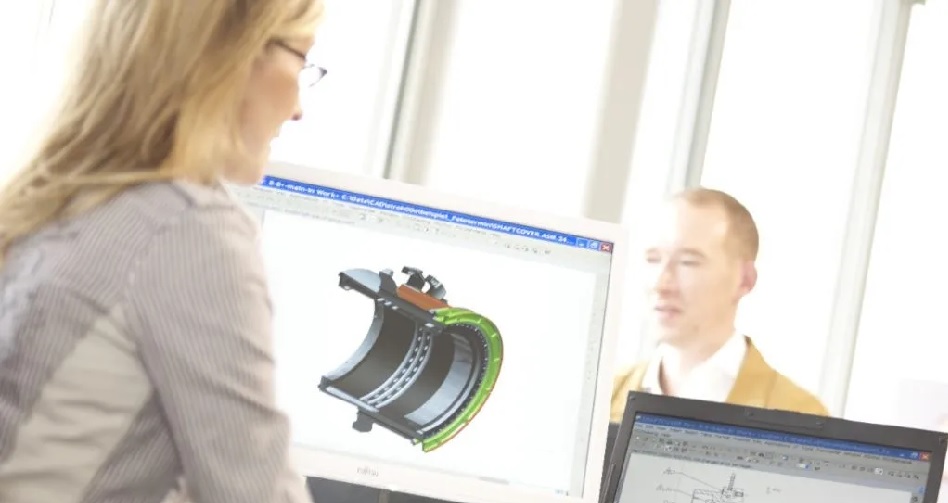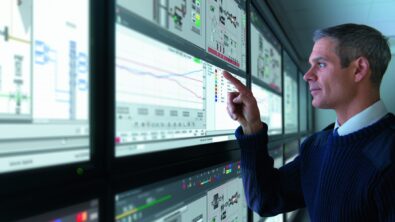MBSE: Future of aerospace industry – part 1

Let’s explore the dynamic aerospace and defense (A&D) industry, taking full advantage of innovations that might be tomorrow’s books and movies. In this first part of a four-part blog series based on the MBSE (Model-Based Systems Engineering) for Dummies eBook, we discuss the factors driving change and keeping in pace with the significant evolution and revolution of modern technologies. Innovation creates new opportunities in propulsion, supersonic and hypersonic flight, and urban air mobility (UAM).
For example, advanced air mobility, using an electric vertical takeoff and landing (eVTOL) aircraft, is an alternative for expediting the transport of people and goods in an environmentally friendly way. These electrical air marvels are usually designed for urban areas but can also serve rural or less-populated environments, efficiently delivering cargo or medical supplies.
Disruptive innovations
Another case is the electric taxi which could involve technological innovations and new business models, using Uber-like services for air mobility. These spectacular modern marvels bring disruption and ongoing technological advances associated with the aerospace and defense industry.
There is a continual drive to deliver parts, products and technologies faster, whether supersonic business jets, electric air taxis or hypersonic transport. Subsequently, there are environmental impacts, causing A&D product developers to seek greener alternatives.
And it’s not just a focus on what you can see in the sky, satellites are becoming smaller and more powerful utilities in orbit. One example is the Starlink constellation of small, low-orbit satellites developed by SpaceX to provide satellite-based internet access. These types of innovations occur at the private sector level, driven by commercial interests. Commercial drivers are not limited to small craft however, we have recently witnessed the compelling “space race” between Virgin Galactic, SpaceX, and Blue Origin.
Agile engineering
Excellent ideas emerge more quickly with competition trying to get to market faster more economically. Therefore, it’s not just about modern innovations but controlling costs and cutting the development schedule. Unfortunately, progress is advancing exponentially, while the A&D industry sometimes lags behind due to the complex systems. Several years can pass between having an idea and seeing a product come to market. So, as the pace of progress accelerates, long cycle times become more problematic.
For instance, expectations can shift while the product is on the way to market. Therefore, there is a need for flexibility to evolve the product while still developing it. In the meantime, it further controls electrification as an efficient and reliable electromechanical option supplanting hydraulic technologies. These trends and factors can create stress for many engineering teams on any given project.
Aerospace and defense outlook
Innovation is not the only factor driving change in today’s companies. Other issues include governmental agencies and regulators, such as the U.S. Department of Defense (DOD), the Federal Aviation Administration (FAA) and the European Union Aviation Safety Agency (EUASA). Subsequently, companies have urgent priorities that sometimes need shifting. The industry must adapt to serve its many masters — including product engineering and manufacturing.
In addition, start-ups and new companies are coming to the table in space, air mobility and defense. Subsequently, disruptors such as drones are making themselves known in the industry. Ecological issues are another factor globally, looking for alternative fuels that increase interest in electric or hybrid solutions.
Lastly, safety is always a concern for the industry, the public, and regulators. The Boeing 737 MAX’s situation shows the vital importance of considering every safety measure. To succeed, aircraft manufacturers must consider every conceivable hazard, from turbulence and thunderstorms to bird strikes to human error across the design process.
The many competing forces of change and innovation affect aerospace and defense whether they want to address these issues or not. It’s not only about developing the innovative technologies but creating a structure of interconnecting systems, working in parallel with each other, collaborating effectively in a model-based systems engineering workflow.
We look forward to addressing this topic in future blogs based on the MBSE for Dummies eBook.
Download the eBook for more information.
Related Links:
MBSE: Reassessing systems engineering – part 2
MBSE: Model-based approach transforms Aerospace & Defense – part 3
MBSE: Advancing system engineering for Aerospace & Defense – part 4
Software solutions
Siemens’ Xcelerator portfolio helps companies of all sizes create and leverage digital twins that provide organizations with new insights, opportunities, and automation levels to drive innovation.
For more information on Siemens Digital Industries Software products and services, visit siemens.com/software or follow us on LinkedIn, Twitter, Facebook and Instagram.
Siemens Digital Industries Software – where today meets tomorrow.


